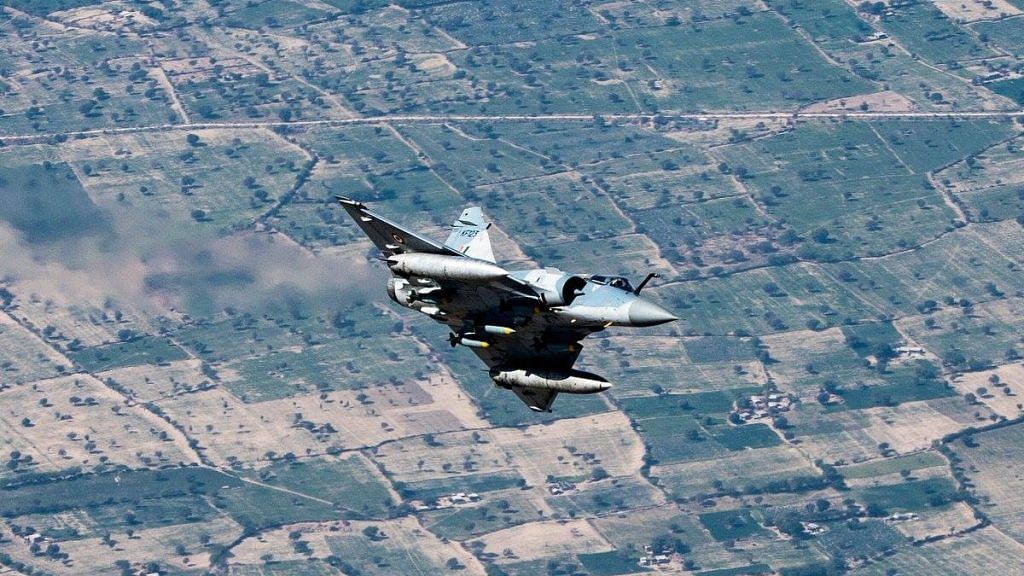Exactly a year ago, India carried out a daring airstrike at Balakot to signal that Pakistan’s terrorism export would no longer be cost-free. Internationally, this marked the first-ever conventional military attack by a nuclear-armed nation on the undeniably sovereign territory of another nuclear-weapons State. The fact that Indian warplanes, unchallenged, struck a deep target in Khyber Pakhtunkhwa province led an apprehensive Pakistan to close its airspace to all international overflights for months thereafter.
According to the “theory of nuclear revolution”, nuclear weapons offer a powerful deterrent against a major attack. Attacking another nuclear-armed State, according to this theory, is dangerous, because it could invite a nuclear reprisal. Pakistan’s nuclear shield, however, did not prevent India from retaliating against a Pakistan-aided terrorist attack on a security convoy in Pulwama, in Jammu and Kashmir (J&K).
The Pakistani nuclear shield failed to deter the Indian strike largely because Pakistan’s actions have long militated against the dominant theory of nuclear revolution. The theory posits that, by guaranteeing a country’s security, nuclear weapons make nations less inclined to engage in aggression or belligerent acts.
Instead of viewing nuclear weapons essentially as tools of deterrence, a scofflaw Pakistan — with China’s protection — has been emboldened to engage in roguish actions. By valuing nuclear weapons as political tools for belligerent goals, including seeking to blunt its widening power asymmetry with India through a death-by-a-thousand-cuts strategy, Pakistan has sought to validate the rival “theory of nuclear opportunism”.
Also read: This is what IAF will do to ensure Balakot-style op isn’t questioned again
Balakot, however, showed that, when Pakistan’s nuclear bluff was called, its situation paralleled Hans Christian Andersen’s famous tale about the emperor with “invisible” clothing who was indeed naked. By leaving a gaping hole in the nuclear shield behind which Pakistan has pursued its terrorist agenda, Balakot sent a chilling message to the all-powerful Pakistani generals, including about the vulnerability of their military and intelligence headquarters. And, as if to underline that power respects power, the strike drew no international criticism, but prompted a chorus of calls to Pakistan to root out the terrorist entities it harbours.
Tellingly, no major Pakistan-sponsored terrorist attack has occurred in India in the last 12 months, underscoring Balakot’s game-changing potential. As the late senior minister, Arun Jaitley, declared, “The security doctrine of India has changed. We now attack the point of origin of terror”. Balakot indeed created the strategic space for India to carry out the constitutional reorganisation of J&K.
Pakistan’s generals know that, with its threshold-breaching Balakot strike, India turned the page on its failed policy of strategic restraint. Indian Air Force chief Rakesh Bhadauria pointed to a paradigm shift in India’s posture, with a new political resolve to punish perpetrators of terrorism. Given that India’s new Chief of Defence Staff, General Bipin Rawat, and its new Army chief, General Mukund Naravane, have both spoken about liberating Pakistan-occupied Kashmir, Pakistan’s generals are currently loath to provoke a conflict with India, especially when their country is relying on international dole-outs.
The Balakot attack, like India’s 2016 ground-launched surgical strike, targeted the enemy’s non-uniformed soldiers — terrorist proxies. Indeed, India went out of its way to say it hit a “non-military target” at Balakot, although the terrorist group whose camp was struck is a known front organisation of Pakistan’s Inter-Services Intelligence. Pakistan’s military regards its terrorist surrogates as de facto special operations forces, and employs them cost-effectively as a force multiplier against India. This explains why, just 30 hours after the Balakot strike, Pakistan tried to bomb military sites in J&K in a daring aerial blitz.
In repulsing the Pakistani aerial attack, India not only lost a MiG-21, with its pilot captured by Pakistan, but also mistakenly shot down its own Mi17 chopper — a horrific incident in which six Air Force officers and a civilian were killed. Pakistan’s attack opened an opportunity for India to wreak massive punishment. But, averse to triggering a spiral of escalation at a time when national elections were looming, India let go of that opportunity.
Against this background, if Pakistan’s risk-seeking behaviour, territorial revisionism and terrorist agenda persist, the risks of a major military confrontation with India cannot be discounted. India seems no longer willing to put up with Pakistan’s terrorism-driven asymmetric warfare, which cumulatively has proved costlier for India in financial, human and internal security terms than even the historic 1971 war that gave birth to Bangladesh.
Deterrence works if the punitive response to aggression is prompt and effective. Pakistan’s generals are uncertain about the extent or severity of an Indian military response if they stage another major cross-border terrorist attack.
To compel a fundamental change in Pakistan’s conduct, India appears ready to impose greater costs. The next Indian reprisal attack could seek to target the terror masters, not their surrogates. Unless the puppeteers — not their puppets, who essentially serve as cannon fodder — begin bearing escalating costs, there is not much likelihood that Pakistan would reform and be at peace with itself.
By special arrangement with
Also read: If we had Rafales, we’d have shot down 4-5 Pakistani jets after Balakot: IAF ex-chief Dhanoa
